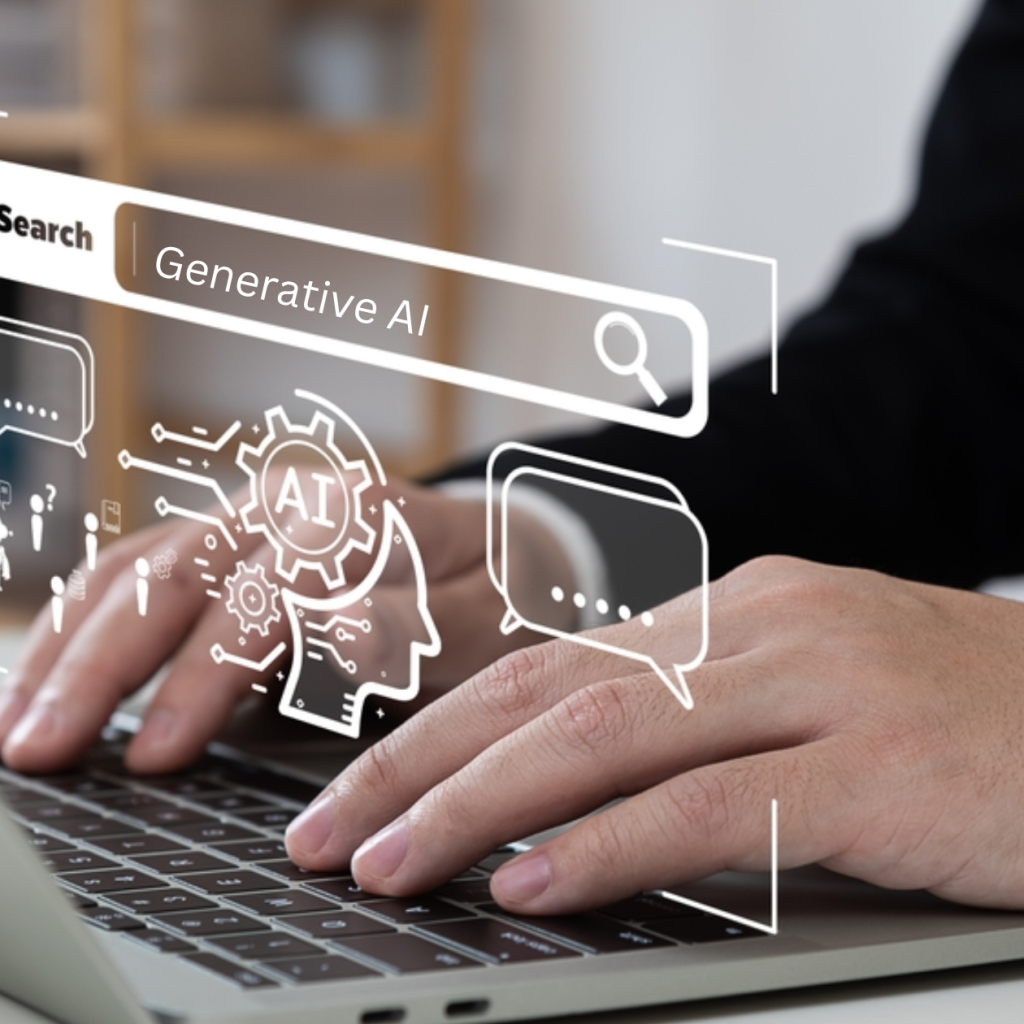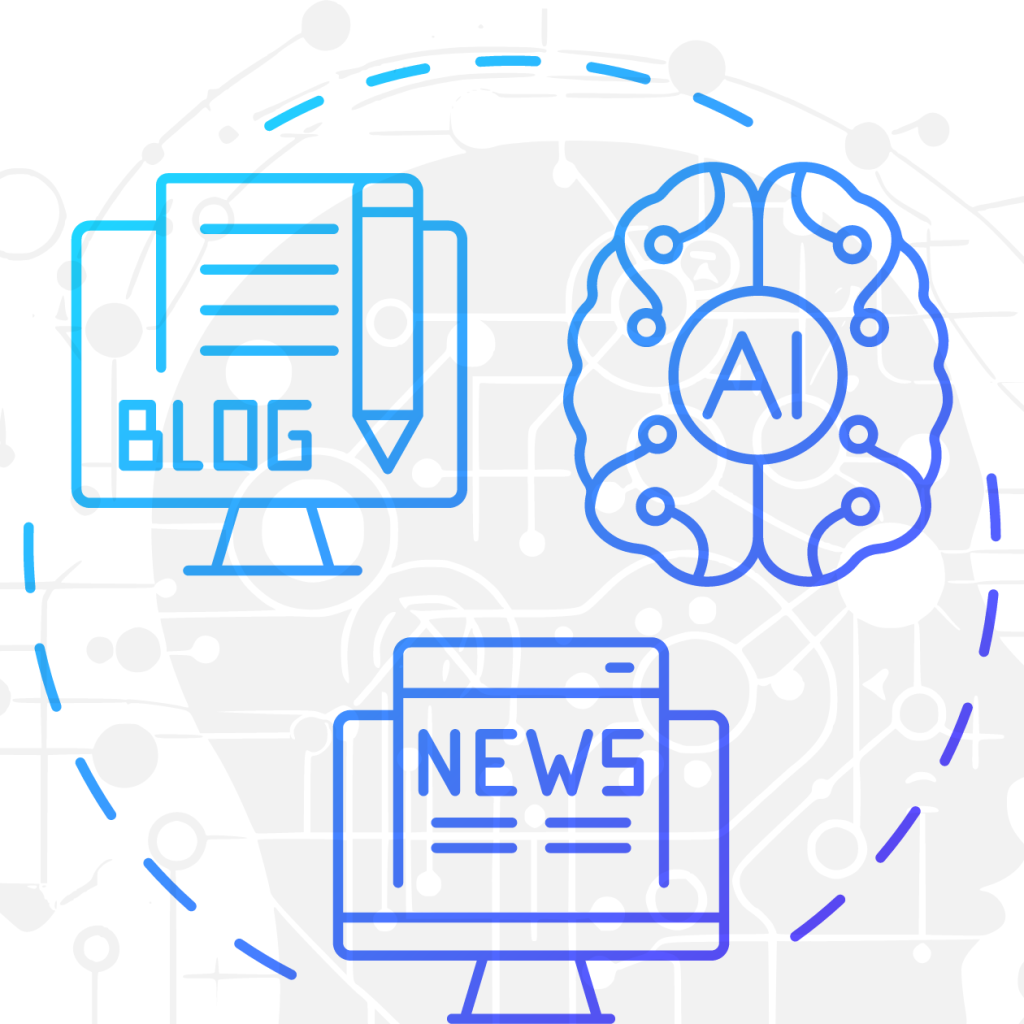Introduction
In recent years, generative AI has emerged as a transformative technology, revolutionizing various industries. From creating realistic images to generating human-like text, generative AI has shown remarkable potential in accelerating business creativity and innovation. The global generative AI market, currently valued at over $13 billion, is projected to exceed $22 billion by 2025, growing at a CAGR of 27.02%.In this blog, we will delve into the rising popularity of generative AI and explore four key trends shaping its landscape in 2024.
What is Generative AI?

Generative AI is a subset of artificial intelligence that focuses on creating new content, such as images, text, audio, or video, that is indistinguishable from content produced by humans. Unlike traditional AI, which relies on predefined rules and patterns, generative AI utilizes advanced algorithms and neural networks to generate novel and realistic outputs.
The World Economic Forum defines generative AI as “a category of AI algorithms that generate new outputs based on the data they have been trained on.” To understand the concept better, let’s take a hypothetical example in the context of image generation. Picture a software application equipped with generative AI capabilities that is tasked with creating realistic portraits of fictional characters for a video game.
First, the generative AI model is trained on a vast dataset of human portraits to learn the underlying patterns and features of facial expressions, features, and structures. The model analyzes the dataset and extracts essential characteristics that define a human face. Once trained, the generative AI model can generate new portraits by synthesizing combinations of these learned features. When provided with input parameters such as gender, age, ethnicity, and facial expressions, the model uses its learned knowledge to generate a unique portrait that aligns with the specified criteria.
For example, if the input parameters specify a young male character with a cheerful expression, the generative AI model will generate a portrait that fits these criteria, complete with appropriate facial features, expressions, and details. The resulting portrait will be realistic and indistinguishable from a human-drawn illustration, despite being entirely generated by the AI model.
Generative AI can further enhance the creative process by allowing artists and designers to explore endless possibilities and iterate quickly. Instead of manually creating each character portrait from scratch, designers can leverage generative AI to generate a wide range of options that serve as a starting point for further refinement and customization.
Generative AI examples
Generative Artificial Intelligence (AI) has undergone significant evolution since its inception, driven by advancements in deep learning algorithms and neural network architectures. The roots of generative AI can be traced back to the early 2010s when researchers began exploring generative models capable of producing realistic data samples. However, it was the introduction of Generative Adversarial Networks (GANs) by Ian Goodfellow in 2014 that marked a major breakthrough in generative AI. GANs introduced a novel framework for training generative models by pitting two neural networks against each other: a generator network tasked with creating synthetic data, and a discriminator network trained to distinguish between real and fake data samples. This adversarial training approach enabled GANs to generate highly realistic outputs across various domains.
Here’s are some quick details about the most prominent generative AI examples:
Content Generation :
Language Models like OpenAI’s GPT (Generative Pre-trained Transformer) have demonstrated remarkable capabilities in generating coherent and contextually relevant text. These models are trained on vast amounts of text data and can generate human-like text in various styles and tones. OpenAI GPT-3 is a popular tool in the area of content generation. OpenAI’s GPT-3 is one of the largest and most powerful language models available, capable of generating high-quality text across a wide range of topics and genres.
Image Generation:
Generative Adversarial Networks (GANs) have revolutionized the field of image generation by enabling the creation of high-quality and realistic images. GANs consist of two neural networks, a generator and a discriminator, which are trained simultaneously to generate images that are indistinguishable from real photographs.NVIDIA’s StyleGAN is a popular framework for training and generating high-resolution images with GANs. It allows users to control various aspects of image generation, such as style, resolution, and diversity.
Video Synthesis:
Generative AI algorithms can synthesize realistic video sequences, including deepfake videos and animated content, with impressive accuracy. These models learn from large datasets of video footage and can generate new video content that closely resembles real videos. DeepMind’s DALL-E is a popular tool in this area. While primarily focused on image generation, DALL-E has shown promising capabilities in generating diverse and creative visual content, including animations and scenes.

Importance of Generative AI
Generative Artificial Intelligence holds immense importance for businesses across industries, particularly in the context of data-driven decision-making and content creation. One significant aspect of generative AI’s importance lies in its ability to generate synthetic data. In scenarios where acquiring large, diverse datasets for training machine learning models is challenging or costly, generative AI can fill the gap by creating synthetic data that closely mimics real-world data. This synthetic data can be used to augment existing datasets, improve model performance, and enhance the robustness of AI systems without the need for extensive data collection efforts.
By leveraging generative AI to generate synthetic data, businesses can accelerate the development and deployment of AI solutions while reducing dependency on limited or biased datasets. Furthermore, generative AI enables businesses to automate and streamline content creation processes, leading to increased efficiency and creativity. Whether it’s generating realistic images or crafting marketing copy, generative AI algorithms can produce high-quality content at scale, freeing up human resources for more strategic tasks.
Generative AI trends
#Trend 1 - Multimodal AI models
Multimodal AI models are designed to process and generate content across multiple modalities simultaneously. Traditionally, AI models have been trained and specialized in one specific type of data, such as images, text, or audio. However, multimodal AI models break down these barriers by integrating information from diverse sources, allowing them to understand and generate content that combines different modalities seamlessly. For instance, a multimodal AI model could generate a caption for an image, describing its content in natural language while also generating a relevant image based on a textual description. This capability enables the model to understand the context of the image and generate corresponding content in a different modality. Similarly, multimodal AI models can generate video content based on textual descriptions, produce audio descriptions for images, or even translate between different modalities, such as converting text to images or vice versa.
#Trend 2 - Autonomous Agents
Autonomous agents focus on the development of AI systems that are capable of independent decision-making and creative expression. While traditional AI models are typically programmed to perform specific tasks based on predefined rules and instructions, autonomous agents possess the ability to interact with their environment, learn from feedback, and generate novel content or solutions autonomously.
These autonomous agents are often powered by advanced machine learning techniques such as reinforcement learning, where the agent learns to achieve specific goals through trial and error. By exploring different actions and observing their consequences, the agent can adapt its behavior over time to maximize rewards or outcomes. This allows autonomous agents to navigate complex and dynamic environments, make decisions in real-time, and generate content or solutions that are tailored to specific contexts or objectives.
#Trend 3 - Small language models
Small language models are characterized by the development of compact yet powerful models tailored for specific tasks or domains. While large language models like OpenAI’s GPT-3 have garnered significant attention for their impressive capabilities, they often come with high computational requirements and resource constraints that make them less accessible for smaller organizations or projects with limited computing resources. Small language models address these challenges by offering a more lightweight and efficient alternative that retains much of the functionality and performance of larger models. These models are typically trained on smaller datasets and optimized for specific use cases, allowing them to achieve comparable results with reduced computational overhead. One of the key advantages of small language models is their versatility and scalability. They are ideal for a wide range of applications, from chatbots and virtual assistants to text summarization and sentiment analysis.
#Trend 4 - Open models will become comparable with Proprietary models
The trend of open models becoming comparable with proprietary models refers to the increasing competitiveness and performance of open-source generative AI models relative to proprietary models developed by tech giants and large corporations. Traditionally, proprietary models developed by companies like Google, OpenAI, and Microsoft have dominated the field of generative AI due to their superior resources, expertise, and proprietary datasets. However, open-source initiatives and collaborative research efforts have led to the development of a new generation of open models that rival their proprietary counterparts in terms of performance, quality, and capabilities. These open models are developed by academic researchers, independent developers, and community-driven projects, often leveraging publicly available datasets and resources. One of the driving forces behind this trend is the democratization of AI technology, as open models empower a broader community of developers, researchers, and organizations to access and leverage cutting-edge AI capabilities. By making AI technology more accessible and transparent, open models promote innovation, collaboration, and knowledge sharing within the AI community.
Wrapping up
At Datacrew, we adhere to industry-leading standards and expert recommendations, crafting procedures that are self-sufficient and independent of individual input. Our goal is to deliver AI solutions that are dependable, accurate, and capable of scaling seamlessly. Get in touch with us today to discuss how we can facilitate the use of AI/ML systems at scale to build modern data analytics architectures.